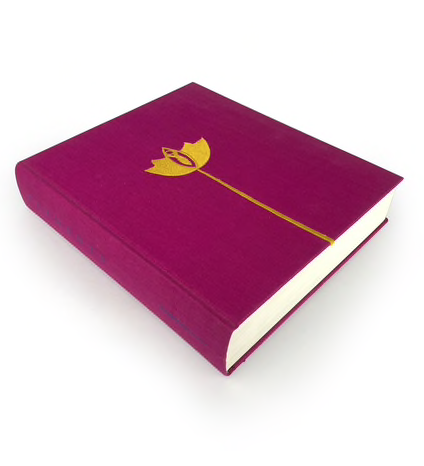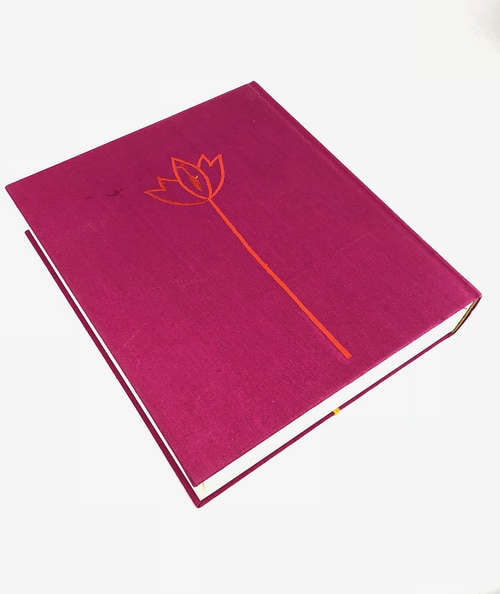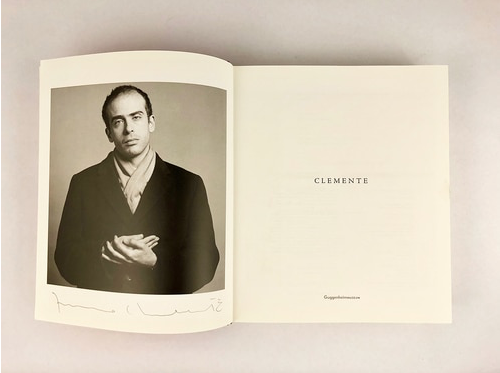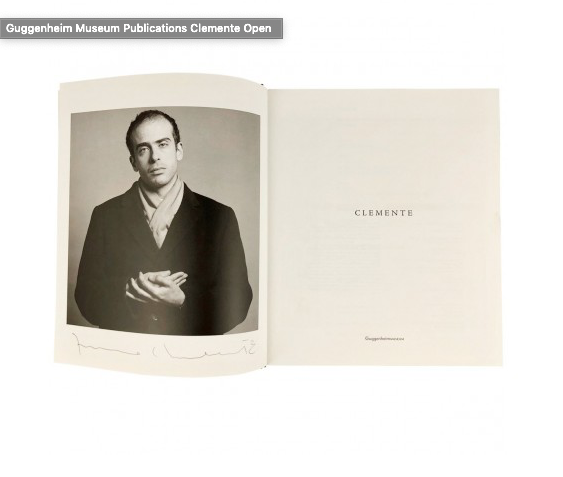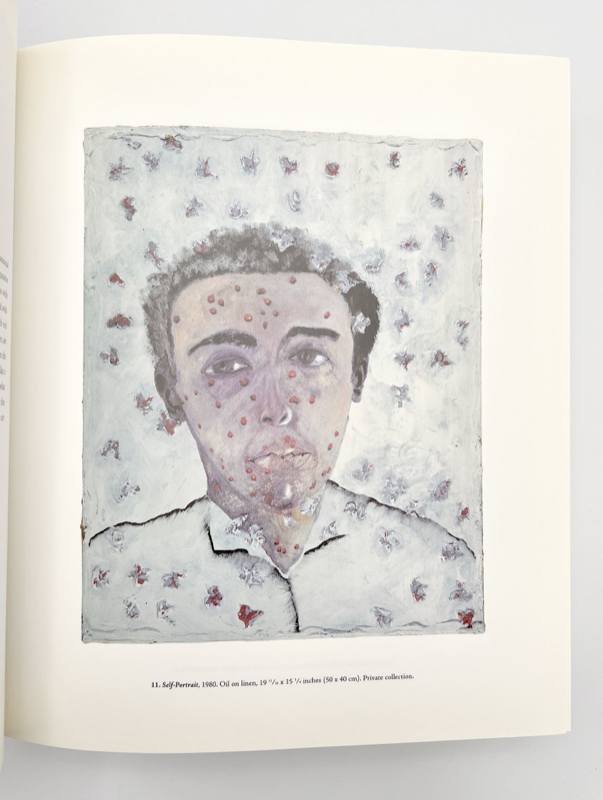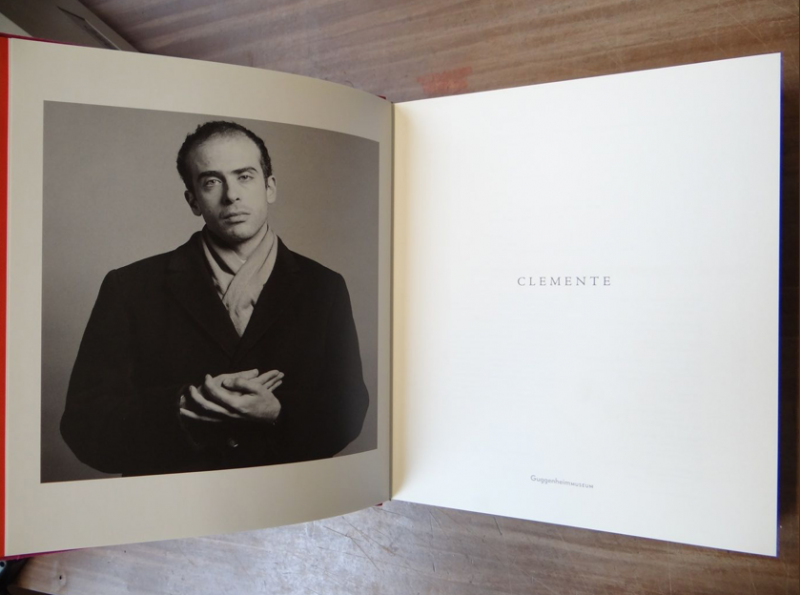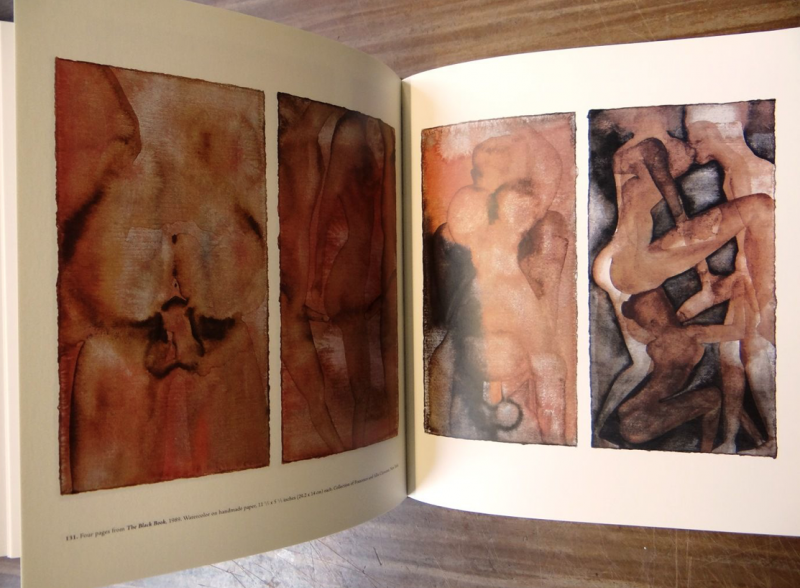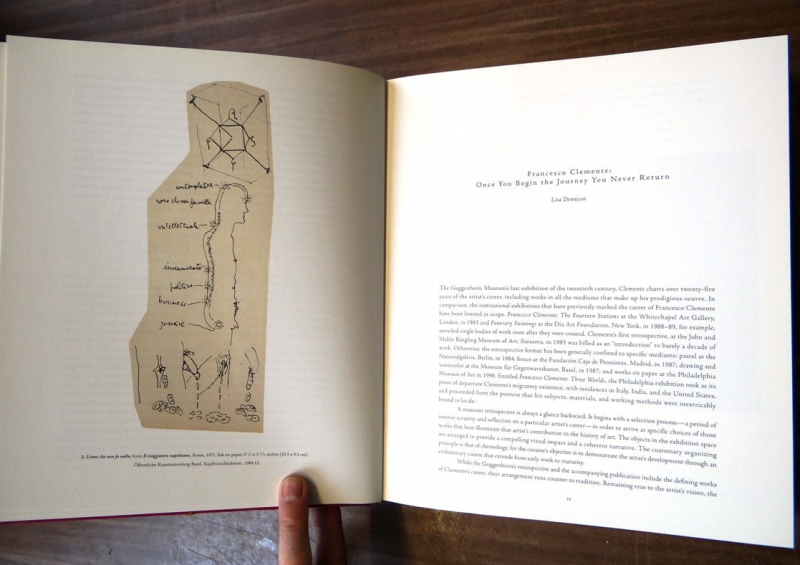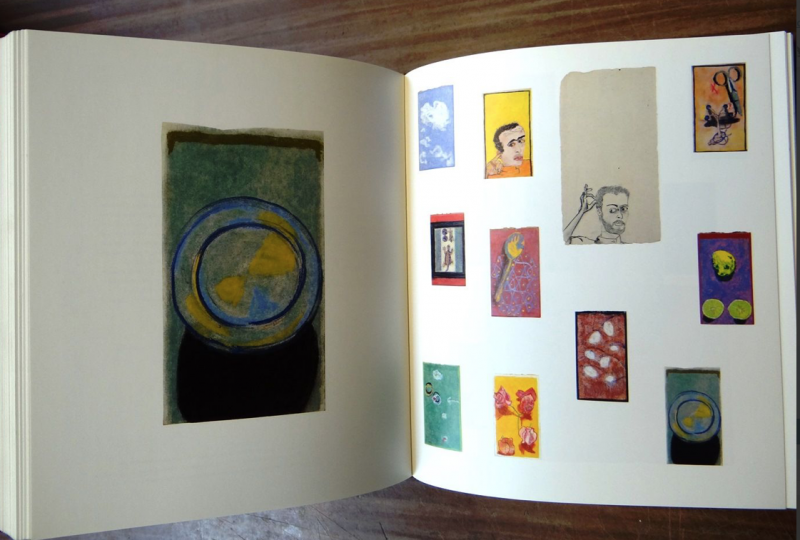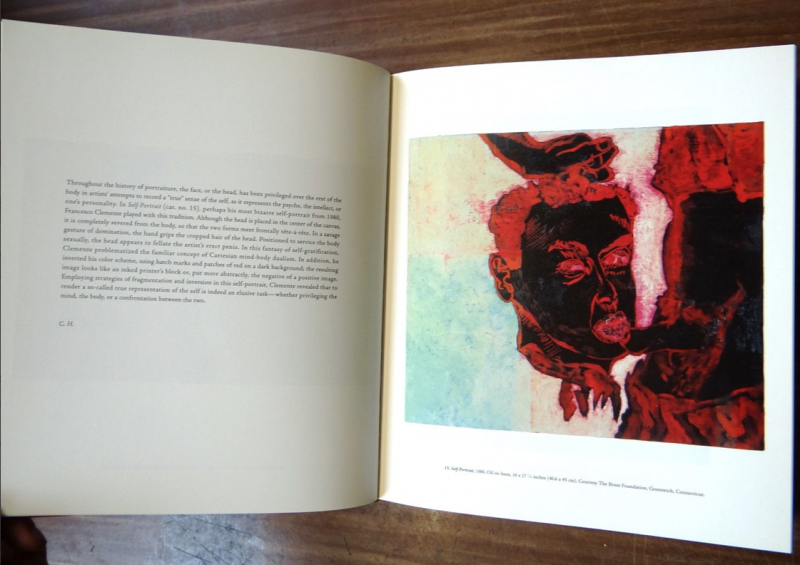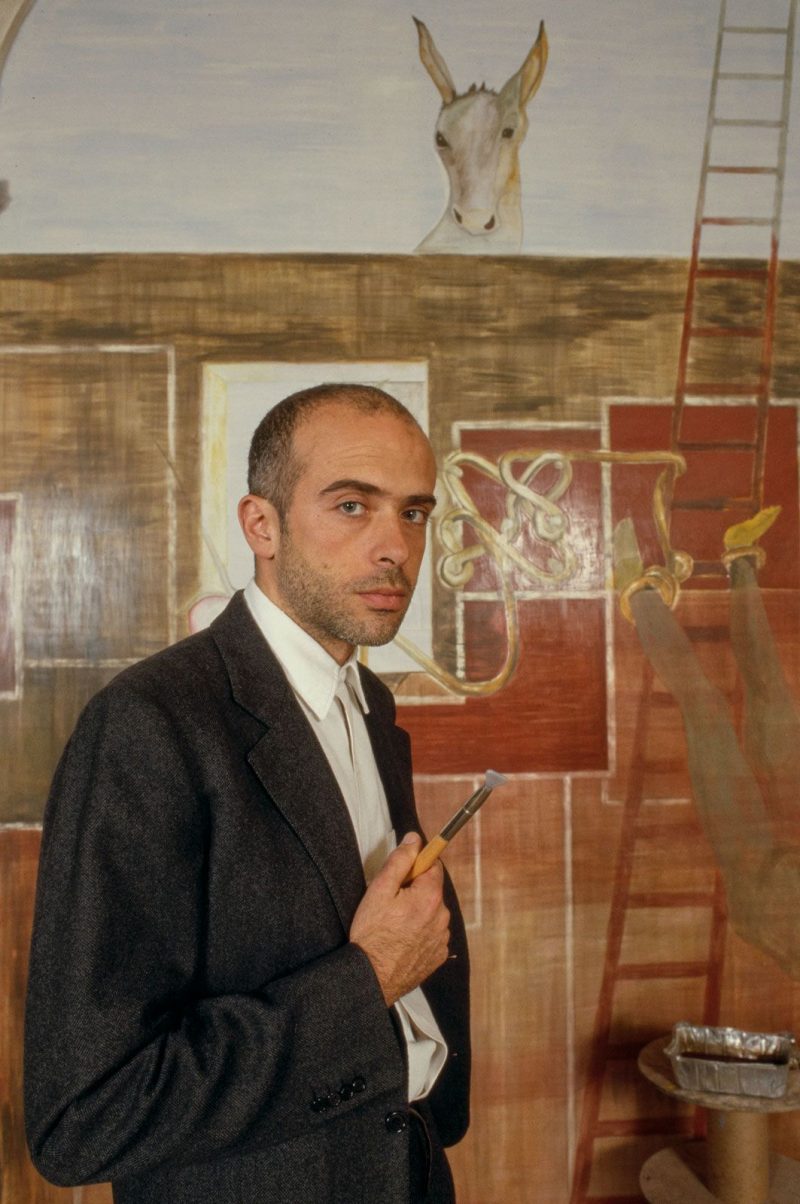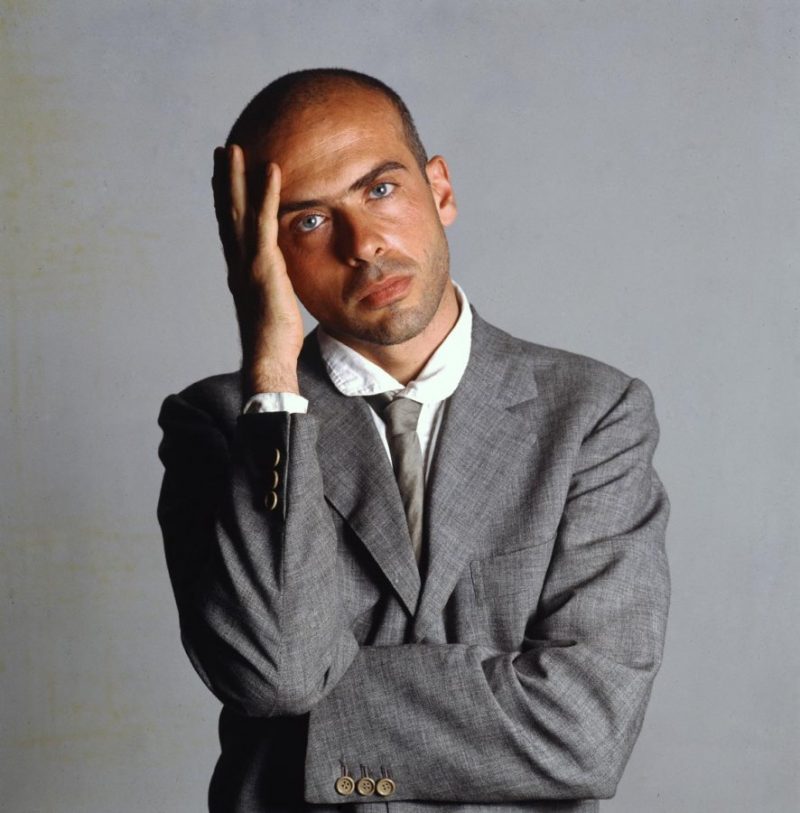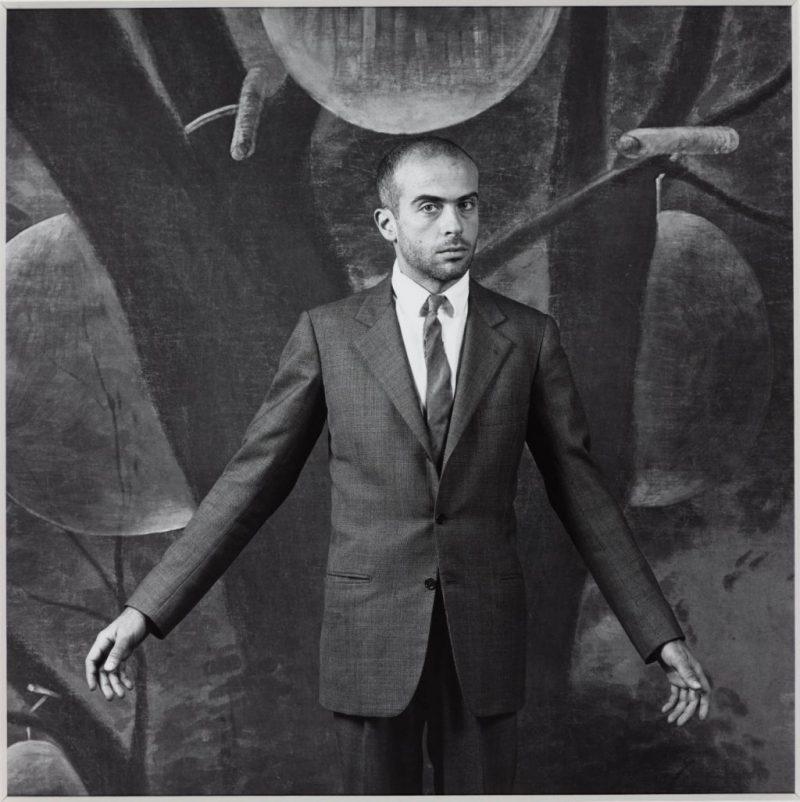RARE Edition Clemente, 1999. Signed by Artist
Special Edition Francesco Clemente, 1999. Signed by Artist
Author: Lisa Dennison with Foreward by Thomas Krens
Publisher: Guggenheim Museum Publications
Materials: Hard cover book bound in custom died and embroidered Indian cotton
Country of Origin: Printed in Germany
Date: 1999
Dimensions: 10” W x 11.75” H x 2.25″ D
Condition: Excellent. Book rarely handled.
MARKET VALUEL $1200 Signed.
Appraised at USD$800 Unsigned / see links in research
ASKING USD$800 SIGNED by the artist for me.
This special edition was published on the occasion of Francesco Clemente’s 1999 exhibition at the Guggenheim Museum in New York. Wrapped in hand-dyed and hand-emroidered Indian cotten, the flower designs front and back were created by Clemente. Signed by the artist at a preview of the exhibit. Acquired by me, directly from the artist on opening of the exhibit.
Lisa Dennison is the chairman of Sotheby’s North and South America. She was previously the director of the Solomon R. Guggenheim Museum in New York City. “Clemente” is a hardcover special edition of works by Francesco Clemente, written by Dennison. The book is bound in a custom dyed and embroidered Indian design by Clemente, and was published by Guggenheim Museum Publications in 1999. Clemente is signed by the artist.
Market Value Reseach: see these identical UNSIGNED books listed here
https://www.biblio.com/book/clemente-solomon-r-guggenheim-museum-new/d/1445569962
About Francesco Clemente
Born in Naples in 1952, Francesco Clemente playfully says that he belongs to the last generation to fight the notion that capitalism is inevitable. Like many of his generation, he sympathized for those fighting the political and class system of 1970s Italy. At that time, Arte Povera was coming into prominence as a movement that stood against the institutional status quo, favoring conceptual strategies and the use of found objects and industrial materials over painting, which it considered to be obsolete.
Francesco Clemente met Joseph Beuys, who lived in Dusseldorf, in 1971, and observed and admired Cy Twombly, who lived in Rome, from afar. Schooled by Arte Povera artists like Mario Merz and Jannis Kounellis, Clemente became close to friend and mentor Alighiero Boetti in 1973. Together they traveled to Afghanistan, where Clemente was inspired by Boetti’s mode of working with local artisans and craftspeople. Clemente was drawn to the Eastern way of life, and he soon sought creative refuge and spiritual realization in India, moving there with his wife, Alba, a well-known theater actress whom he had met in Rome, in 1974.
In 1980, Clemente traveled to New York for his exhibition at Sperone Westwater Fischer gallery. Soon after, with Alba and their two daughters, he established a studio on a then deserted street in downtown Manhattan, where he works to this day. New York City in the 1980s proved to have a profound impact on Clemente’s artistic life. He collaborated with and befriended a wide range of dancers, poets, and painters in the city’s thriving art and literary scene. He worked on a series of collaborative paintings with Andy Warhol and Jean-Michel Basquiat, and created illuminated manuscripts with poets Allen Ginsberg, Robert Creeley, John Wieners, and Rene Ricard. He had met the poets, idols of his teenage years, through Raymond Foye, with whom he later published the Hanuman Books.
In the early years of the decade, he was considered a part of the Transavanguardia movement in Italy, and its American equivalent, Neo-Expressionism, in New York. Artists like Julian Schnabel, Anselm Kiefer, Enzo Cucchi, and Jean-Michel Basquiat were known for a “return to figuration,” moving away from the minimalist and conceptual modes dominant at the time, in exchange for painting and expressive symbolic imagery.
Clemente chronicled the many fascinating personalities he met during this time through portraiture, achieving the distinctive style for which he became well recognized. The popularity of his portraits led to his participation in the 1998 film Great Expectations, directed by Alfonso Cuarón, for which he created more than 100 works on paper and portraits on canvas that were a critical element in the storyline. The following year, Clemente had a major retrospective at the Solomon R. Guggenheim Museum, New York, which traveled to the Guggenheim Museum Bilbao in 2000.
Today, Clemente is reluctant to be linked to any specific movement, and though he credits his development to his relationships with many artists, he views himself as a nomadic artist. He is fascinated by the continuous exchange between the East and West, particularly between India and America, which goes as far back as the nineteenth century, when Ralph Waldo Emerson and Henry David Thoreau read the Bhagavad Gita.
Clemente delights in depicting the grotesque as sublime, and the sublime as grotesque. The two values are interchangeable in his visual language: his graphic depictions of sexuality, violence, explicit male and female figures, and bodily functions are executed vividly, without judgment, and in a spirit of celebration. These depictions are intended to witness the essential harmony and the transcendent nature of reality, a testament to Clemente’s assertion that to the eye of a painter, the world is perfect.
Selected Exhibitions
In 1980, Clemente was selected to exhibit at the Venice Biennale’s first Aperto, a section that displayed the works of emerging young artists. In 1985, Michael Auping curated an exhibition of Clemente’s work at the John and Mable Ringling Museum of Art, in Florida. The exhibition subsequently traveled to the Walker Art Center, Minneapolis, the Dallas Museum of Art, the University Art Museum, Berkeley, and the Albright-Knox Art Gallery, Buffalo, ending at the Museum of Contemporary Art, Los Angeles in 1987. He also exhibited his work at venues including the Institute of Contemporary Art, Boston, the Metropolitan Museum of Art, the Art Institute of Chicago, Dia Art Foundation, and the National Gallery in Berlin, in a show that later traveled to the Stedelijk Museum Amsterdam and other venues in Germany. In 1990, his exhibition Three Worlds opened at the Philadelphia Museum of Art; it continued to the Wadsworth Atheneum, Hartford, Connecticut, the San Francisco Museum of Modern Art, and the Royal Academy of Arts, London, in 1991. After the Guggenheim retrospective in New York and Bilbao, other notable exhibitions in the 2000s included shows at the Irish Museum of Modern Art, Dublin, Museo MADRE, Naples, and the Schirn Kunsthalle, Frankfurt. In 2011, The Uffizi Gallery, Florence, presented an exhibition of self-portraits and the artist’s version of the tarot deck. The Uffizi went on to acquire one of his self-portraits, now on view in the Vasari Corridor. Six of Clemente’s tents were shown in Encampment at MASS MoCA, Williamstown, in 2015, and the exhibition later traveled to Carriageworks in Sydney. The Spring Arts Center, Beijing, showed his large murals in 2016.
Francesco Clemente Exhibition Announcement
Francesco Clemente Exhibition Opening
Francesco Clemente Evening Hours
Yoga Inspired by Francesco Clemente
The Brant Foundation Library: Francesco Clemente
Portraiture Workshop Inspired by Francesco Clemente
The Brant Foundation Lecture Series: Francesco Clemente
